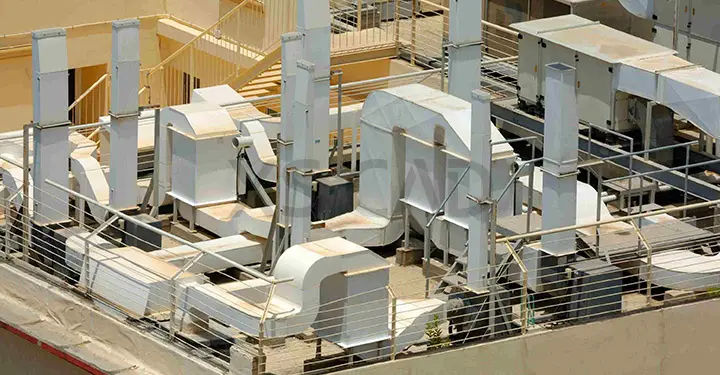Our Articles

How Future HVAC Systems Must Adapt to Climate Change
The winter of 2017 saw Ras Al Khaimah, an emirate in the desert country of the United Arab Emirates, experience unprecedented snowfall and Dubai, normally home to blistering heat, endure hailstorms and arctic winds. Unusually hot weather in Europe in 2018 produced drought, wildfires, crop failures and a heat wave of record-breaking temperatures. Researchers estimate that the likelihood of a heat wave was doubled by global warming. Polar temperatures are rising faster than those at mid latitudes, a development known as polar amplification.
Climate change has far-reaching effects – and it’s not just extreme and unusual precipitation, winds and heat, but the domino effect of extreme weather changes can result in electricity grid crashes, even across continents. Scientists predict a 3-foot rise in sea levels, an average temperature increase of 5 degrees and polar temperature increases of up to 10 degrees at the end of the century, as a result of global climate change-inducing human activities.
With a medley of predicted changes in our future living environment, it becomes imperative to change the way we live now. As climate change is forecast to significantly affect global temperatures, the way we live indoors, particularly our HVAC energy consumption and requirements, must adapt to the situation with intelligent and ecologically feasible MEP engineering design.
Coastal buildings will be required to install utilities, HVAC systems and ducts above the DFE, or Designated Flood Elevation. Floodwaters, depending on their volume and intensity, present issues of inundation, velocity flow and debris impact on outdoor HVAC systems and equipment. Power circuits, controls and HVAC mechanical parts are all vulnerable to floodwaters. Possible outcomes include the shorting of power units and the failure of HVAC equipment operation as well as the possibility that the equipment be torn from its location and carried away. Waters with high salt content can result in corrosion and deterioration of metal HVAC components. Pipes and ducts can be separated. Currently, prevention of these outcomes involves the elevation of all outdoor HVAC equipment and ductwork above the DFE and confining them securely to try and prevent their movement.
Load calculations for air conditioners will have to be reviewed. Also, an increase of envelope insulations and efficiency standards can counteract and prevent rises in cooling loads due to increasing outside temperatures.
Climate impacts HVAC system design in several ways. These are a few determining factors:
Wind speed
Precipitation
In the United States, the American Institute of Architects wants zero net energy consumption for all new buildings by 2025 or 2030. How this happens depends on the swift and strict adoption of aggressive building energy efficiency measures. They include changing indoor pollutant sources, heat loads, ventilation rates, HVAC equipment types and building operating practices. These changes must noticeably affect indoor environmental quality (IEQ). The goal will be to develop and use HVAC technologies and practices so that
building energy consumption is significantly reduced while improving IEQ.
Potential changes in HVAC system design and use that can help achieve these goals include:
In the future, HVAC needs will also include improved integration of all HVAC components and improved integration of HVAC systems with other building systems. Additional measures involve the development of construction materials and components with low toxic pollutant emissions.
Standards for building energy systems in the future must be based on measured energy consumption, prescribing minimum IEQ maintenance. Systems to measure IEQ will be integrated with HVAC controls.
Refrigerants less likely to contribute to global warming should be used in global warming potential (GWP) compressors. The HFCs used in refrigerants can be up to a thousand times more powerful per pound than carbon dioxide. Replacing these HFCs has the potential to reduce global warming and the effects of climate change by 0.5˚C, representing a 10% reduction in the regular increase of global temperatures.
Much needs to be done and much can be done to improve HVAC systems in the future to combat the far-reaching effects of climate change, and the direction to follow must be set by design specialists. To improve and optimise HVAC systems design, HVAC mechanical engineering consultants must be employed with clear guidelines on what to use and how to use available components and perhaps even design new components for the specific purpose of combating climate change. The increasing demand for such consultants in Western countries has meant that offshore engineering consultants and offshore MEP design services are increasingly used for full or partial design support. The expertise and technical knowhow of these HVAC mechanical engineering consultants will assist in creating a new vision for battling the effects of climate change in the construction industry.

